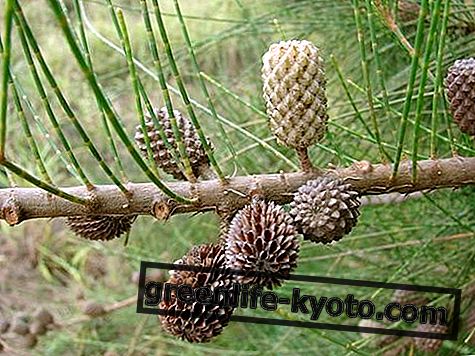
Who has been at least once in the Canary Islands, Spanish territory in the middle of the Atlantic, near the African coasts, will not easily forget the Mojo . What is it?
Let's talk about the main sauce typical of the place, where it comes from. In reality we should use the plural and speak of mojo rather than mojo, because in the end this term includes various types of local sauces that differ slightly depending on the ingredients.
Many times we talk about mojo rojo, mojo con queso, mojo de cilantro and mojo verde, to give just a few examples. In general the base is composed of oil, water, salt and local peppers, including chillies.
Garlic, paprika, cumin, coriander and other spices in different doses go to flavor the mojo. Some variants have a hint of acid given by wine vinegar, apple vinegar, lemon or other citrus juice. Let's start with the recipe for a simple basic mojo.
Ingredients
> 5 cloves of garlic;
> 3 dried peppers
> breadcrumbs;
> salt;
> cumin in seeds;
> smoked paprika;
> red wine vinegar;
> oil.
Preparation
First of all, the peppers . It is essential that they are dried and seedless . Generally, in the Canary Islands, the locals dry them personally after removing the seeds.
Another local practice is to let the peppers rest in water at least one night before preparation. The water will not be thrown away but used, as we will see, in the recipe. We will crush our peppers in a mortar together with the cumin seeds (about a teaspoon) and the peeled garlic cloves, adding a little salt already at this stage.
When our preparation is sufficiently fine and homogeneous, it is time for paprika (from half to 1 teaspoon), olive oil (5 teaspoons), and red wine vinegar (to taste, usually 3 teaspoons) .
After pounding and mixing further it is time to give substance by adding 5 teaspoons of breadcrumbs . At this point it is a matter of mixing everything until it reaches the consistency of a homogeneous cream.
Once the mojo paste is obtained, it is time to add the water in which the peppers have spent the night, gradually, until the sauce reaches the desired density.
How to serve
If prepared with red peppers, we will have a mojo rojo, using green ones we will have a green mojo and if we use Madame Jeanette we will have a mojo amarillo .
Adding the parsley we will have the perejil mojo, while with the addition of cheese, as we would do with pesto, we will have the mojo de queso . Sometimes the bitter orange replaces the vinegar while the tapioca flour can make the place of the grated bread .
The winning combination is mojo con papas arrugada s, potatoes boiled in salted water and served with all the peel. The potatoes in fact enhance the mojo, while in the New World they like to add it to barbecues. Not infrequently it is added to rice .












